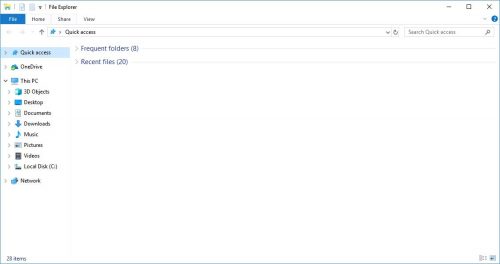Anyone using a computer for a while has heard or had some kind of dealings with bad sectors. As the name suggests, bad sectors are single sectors or block of sectors that are bad, that is, unable to write or read information on them, thus making them unusable.
Bad sectors are “born” whenever some kind of damage occurs on the magnetic coating of the spinning disk located inside the hard drive. One of the most common misinformation is that only hard drives can get bad sectors. This isn’t true, solid state drive also have bad sectors. Going in greater detail the bad sectors on a hdd and ssd are slightly different, but at the end, a bad sector is a bad sector and it can cause a lot of problems.
Almost all disks in recent years come with a certain number of spare sectors. This means that once some bad sectors are discovered, their location is stored on the drive’s memory, those are ignored in the future and the spare sectors are used. This is also in handy because even coming of the production line disks have bad sectors, which you normally don’t notice.
In real work situations, there are two types of bad sectors: Logical or soft bad sectors and physical or hard bad sectors
Logical bad sectors
This is the less scary type of bad sectors, or the reparable ones. The main problem with any bad sector arises whenever the operating system or application is trying to read or write data to bad sectors. This can cause applications not to work properly, operating system to free or even crash with a BSOD. As mentioned, the logical bad sectors are reparable which means that they are not lost forever, just temporarily unavailable.
Physical bad sectors
There are the scarier ones for more than one reason. These are the bad sectors that are as a result of a physical damage to the disk. Unlike the logical ones where the operating system is able to access them in certain situations, there are completely inaccessible. Having a few bad sectors is quite normal, you buy the disk with bad sectors and a few spare ones (all of this is inside the disk, no need to ask your retailer where the spare sectors are), but getting new bad sectors very often is a sure sign that it is time to back up the date and replace the drive. As mentioned, unlike the logical bad sectors which you can use again once they are repaired, these can not be repaired and they are lost forever. Most newer disk models are able to map out the logical bad sectors and mark them as sectors that are not to be used.
Since the logical bad sectors can actually be fixed, this article will show you how.
1.Click on the Windows icon on the left of the task bar or hit the Windows button on your keyboard
2.Type in “File Explorer” and click on the result
3.From the left navigation panel, click on “This PC”

4.Locate the partition that you want to check and repair and right-click it
5.Click on “Properties”
6.Go to the “Tools” tab

7.Click on “Check”
8.Windows will prompt you if you want to a check disk and the procedure will start

Depending on the size of the disk and any potential problems, the check time will vary. During this procedure Windows will try to fix the logical bad sectors so that you are able to use them and will try to map the physical ones so that they are no longer used. The reason why we say that Windows will try is because Windows might no succeed. This would mean that the next step would be to write zeros on the entire drive which will definitely fix the soft bad sectors. We will cover this in future article.
Frequently Asked Questions and Answers
Q: A few bad sectors we causing bsod, I fixed them with Windows but I still get bsod.
A: In some situations, if soft bad sectors can show up where a system files is saved. This means that part of the file is inaccessible or certain data corrupts which causes a system crash. This means that the best thing to do is first to try repairing your Windows with the installation media and if it doesn’t work, do a format instead.
Q: I am using Windows 7, can I fix my bad sectors?
A: Yes, the procedure is the same for Windows 7, 8 and 10


I got a new HDD a while ago and it won’t format. I can hear a sort of snap sound everytime that I click on “format”. My guess is that this is a head related problem which has nothing to do with bad sectors right? It probably got damaged on the road.
If there is a strange noise coming out of the drive then it is highly likely that the moving part (the laser that reads through the spinning discs) is not working properly. If your warranty is still valid I would suggest to return it to the shop to get it replaced (if possible). If you can still access the disk I would suggest to to a backup of the files and replace it. Worst case scenario, if you can’t access the disk, there are companies dealing with that kind of data extraction where they take the disk apart and try to extract as much of the data as possible.
> I got half of my money back as it was still under warranty. I didn’t had any important data stored on it so it’s all good. Thanks for the help.